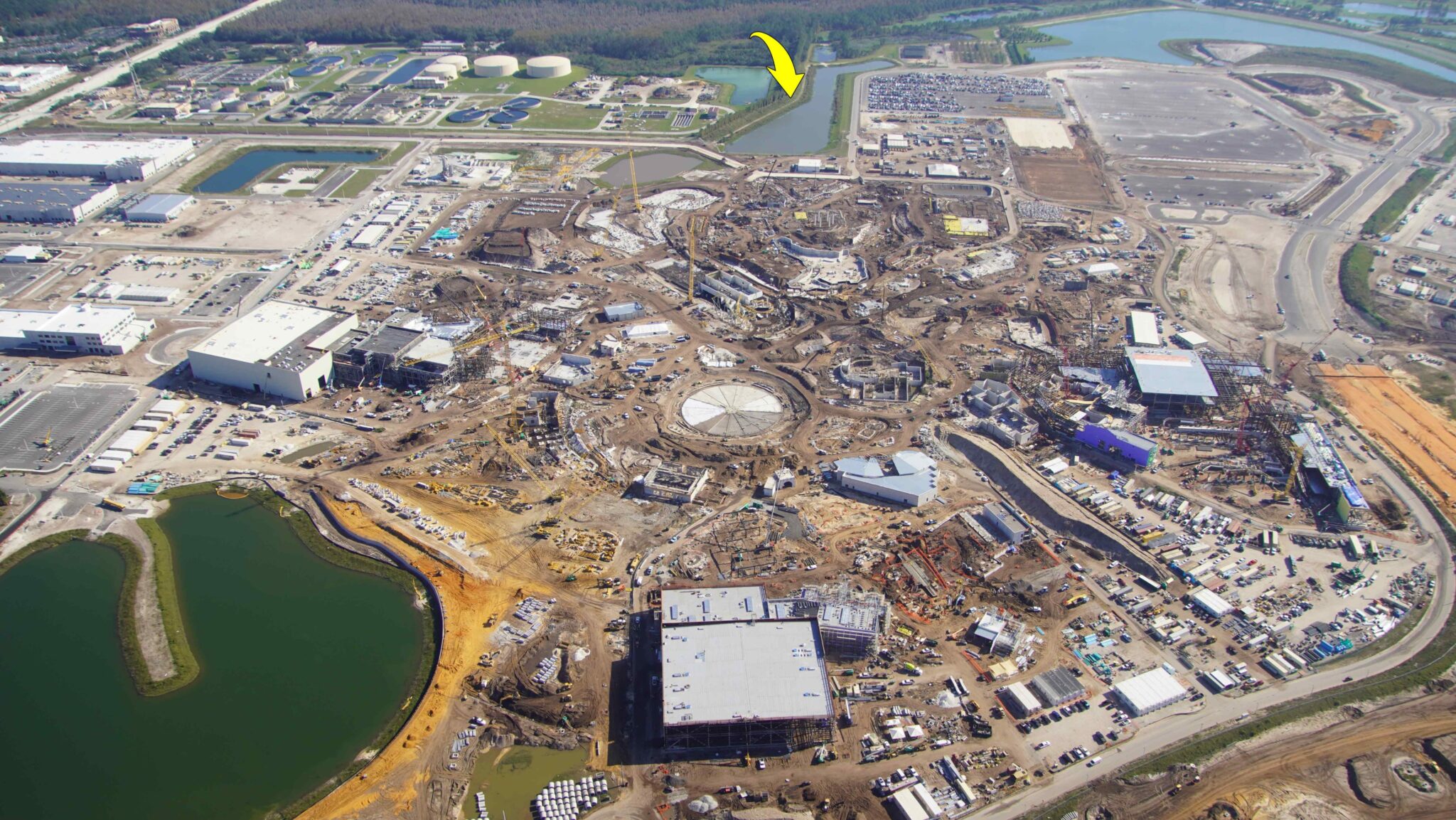Scrutinizing The Details: A Comprehensive Look At Trump's Aerospace Initiatives

Table of Contents
Space Force Creation and its Impact
The Genesis of the Space Force
The creation of the U.S. Space Force as a separate branch of the military under Trump's leadership was driven by a confluence of political and strategic factors. The increasing reliance on space-based assets for military operations, intelligence gathering, and navigation highlighted the vulnerability of these systems to adversarial actions. Concerns about growing space-based capabilities of nations like China and Russia fueled the argument for a dedicated force focused on space.
- Increased focus on space-based assets: Modern warfare heavily relies on GPS, satellite communication, and early warning systems, all space-dependent.
- Concerns about adversarial activity in space: The potential for anti-satellite weapons and cyberattacks targeting space assets necessitated a more robust defense.
- Budget allocation: Significant budgetary resources were allocated to establish the Space Force, reflecting the administration's prioritization of space-based capabilities.
- Initial organizational challenges: The rapid establishment of a new branch of the military presented logistical and organizational hurdles.
Impact on Space Exploration and Defense
The Space Force's establishment has had a multifaceted influence on both civilian space programs and national security efforts. While maintaining a distinct focus on military space operations, the Space Force has also fostered collaboration with NASA and other civilian space agencies.
- Collaboration with NASA: Joint efforts have been undertaken to share resources and expertise, particularly in areas like space situational awareness and launch capabilities.
- Development of new space-based technologies: Investments in advanced sensor technologies, communication systems, and cybersecurity measures enhance national security.
- Improved space surveillance: The Space Force's dedicated focus has enhanced the U.S.'s ability to monitor and track objects in space, both natural and artificial.
- Response to threats in the space domain: The Space Force's mission includes deterring and responding to threats to U.S. space assets.
Criticism and Future Projections
Despite its proponents, the Space Force has faced criticism. Concerns have been raised about its budgetary implications, potential duplication of efforts with other agencies, and international repercussions.
- Budgetary constraints: The substantial costs of establishing and maintaining the Space Force have been subject to scrutiny.
- Potential for duplication of efforts: Concerns exist regarding potential overlap with existing military space programs and NASA's activities.
- International implications: The establishment of the Space Force has raised questions about its impact on international space cooperation and arms control treaties.
- Strategic partnerships: Future success will depend on fostering strong alliances and partnerships with other space-faring nations.
Commercial Space Policy and Private Sector Engagement
Encouraging Private Sector Growth
The Trump administration actively pursued policies aimed at stimulating private sector involvement in the space industry. This strategy included regulatory reforms designed to reduce bureaucratic hurdles and incentivize private investment.
- Regulatory reforms: Streamlining licensing procedures and reducing regulatory burdens made it easier for private companies to enter the space market.
- Incentives for private investment: Tax credits, grants, and other financial incentives encouraged private investment in space-related ventures.
- Public-private partnerships: Collaboration between government agencies and private companies became a key feature of aerospace initiatives.
- NASA's Commercial Crew Program: The successful outsourcing of crew transportation to the International Space Station to private companies like SpaceX and Boeing exemplifies this strategy.
Impact on Innovation and Competition
These policies significantly boosted innovation and competition within the U.S. aerospace industry. The increased private sector participation led to advancements in various areas.
- Launch service competition: Increased competition among private launch providers drove down costs and improved launch reliability.
- Satellite technology advancements: Private companies have led the way in developing smaller, more efficient, and more cost-effective satellites.
- New space-based services: The emergence of new private space-based services, such as Earth observation and satellite internet, created numerous opportunities.
- Economic growth: Increased private investment and job creation stimulated economic growth in the aerospace sector.
Potential Risks and Benefits
While encouraging private sector involvement offered benefits, it also introduced potential risks. Concerns remain about safety regulations, liability issues, and the national security implications.
- Safety regulations: Ensuring adequate safety standards and regulatory oversight for private space operations is paramount.
- Liability issues: Determining liability in case of accidents or failures involving private space missions requires clear legal frameworks.
- National security implications: The increasing reliance on private companies for critical space-based infrastructure necessitates careful consideration of national security risks.
- International competition: The growing involvement of private companies in the space race intensifies international competition.
International Space Cooperation and Competition
Shifting Alliances and Partnerships
Trump's administration's approach to international space cooperation was marked by a mix of collaboration and competition. Relationships with some partners shifted, while the focus on great power competition intensified.
- Relationship with NASA's international partners: While collaboration continued on some projects, the overall approach towards international partnerships exhibited a degree of shifting priorities.
- Cooperation on space exploration projects: International collaboration on certain space exploration initiatives persisted, but strategic priorities were often reevaluated.
- Impact on Artemis Accords: The Artemis Accords, an initiative to govern the exploration and use of the Moon, reflect the administration's vision for space cooperation.
The Great Power Competition in Space
Space became a significant arena in the broader context of great power competition between the US, China, and Russia. This competition extended to various aspects of space activities.
- Competition with China and Russia: The growing space capabilities of these countries posed a strategic challenge to the US.
- Space-based weaponization: Concerns about the potential development and deployment of space-based weapons fueled the competition.
- Cybersecurity in space: Protecting space-based infrastructure from cyberattacks became a critical national security concern.
Long-Term Implications for International Relations
Trump's aerospace initiatives have had lasting effects on global cooperation and competition in space. These implications will continue to shape the future of international relations.
- Arms control treaties: The competitive landscape impacted discussions surrounding international arms control treaties related to space.
- International norms in space: The administration’s actions influenced the development of international norms governing the use of space.
- Future space exploration initiatives: The legacy of these policies will influence future space exploration endeavors and international collaborations.
Conclusion
This comprehensive look at Trump's aerospace initiatives reveals a complex legacy marked by both ambitious goals and significant controversies. The establishment of the Space Force represents a significant restructuring of U.S. military posture, while the push for greater private sector involvement has spurred innovation and competition in the space industry. However, challenges remain, particularly regarding international cooperation, regulatory oversight, and the long-term financial sustainability of these endeavors. Further scrutiny of these initiatives is crucial to understanding their lasting impact on the future of U.S. aerospace dominance and global space policy. To learn more about the specific details and implications of these policies, continue your research on Trump's Aerospace Initiatives and related keywords like "Space Force," "Commercial Space," and "Space Policy."

Featured Posts
-
 Youtuber Jyoti Malhotra Puris Srimandir Visit Footage Espionage Probe Deepens
May 19, 2025
Youtuber Jyoti Malhotra Puris Srimandir Visit Footage Espionage Probe Deepens
May 19, 2025 -
 Muere Juan Aguilera El Talento Perdido Del Tenis Espanol
May 19, 2025
Muere Juan Aguilera El Talento Perdido Del Tenis Espanol
May 19, 2025 -
 Real Madrid Targets New Signing Following Mbappes Subpar Arsenal Performance
May 19, 2025
Real Madrid Targets New Signing Following Mbappes Subpar Arsenal Performance
May 19, 2025 -
 Universal Epic Universe Themed Lands Attractions Shows Tickets And Opening Date Information
May 19, 2025
Universal Epic Universe Themed Lands Attractions Shows Tickets And Opening Date Information
May 19, 2025 -
 Nyt Connections Puzzle 676 Solutions April 17 Hints
May 19, 2025
Nyt Connections Puzzle 676 Solutions April 17 Hints
May 19, 2025
